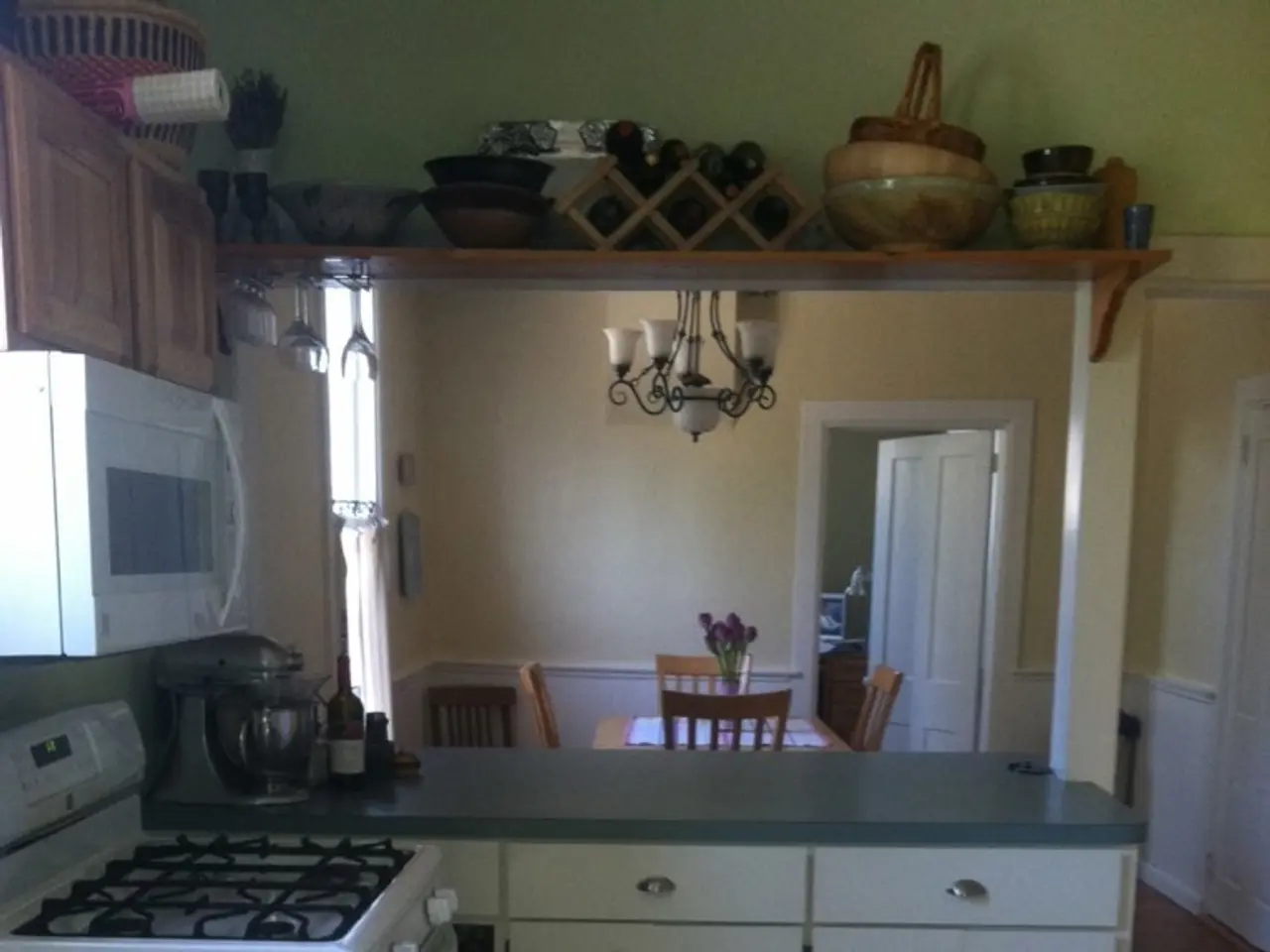Differentiating between kitchen island and table: The subtlety that significantly impacts your cooking space layout
A Modern Revival of Kitchen Islands: Bridging the Gap Between Tradition and Innovation
Kitchen islands, once humble farmhouse worktables, have evolved into central, multifunctional kitchen features, experiencing significant changes throughout the 20th century and enjoying a modern revival with stylish designs and integrated functionality.
Originating from simple worktables used for chopping, kneading, and food preparation, kitchen islands served as the heart of busy kitchens centuries ago. As kitchens evolved, the concept of a standalone working table persisted and transformed.
In the early 20th century, kitchens were influenced by Art Deco furniture styles, popularizing smooth, continuous edges called waterfall edges. This design inspiration later found its way into modern kitchen island countertops, with dramatic waterfall designs made from granite, marble, or quartz.
By the 1940s, kitchen furniture and cabinetry began to be more standardized and incorporated into home designs. The kitchen was emphasized as the heart of the home, with central tables for family gatherings and meal prep.
The 1950s onward marked the rise of the kitchen island concept more directly, becoming a prominent workspace aiding cooking and prepping. By the 1970s and 1980s, kitchen islands grew larger and became multifunctional hubs, used not just for cooking but also as social or dining spaces for homework or family meals.
The trend toward open-plan kitchens starting in the 1960s supported this, as islands created a central, unobstructed gathering and working space bridging kitchen and living areas.
In modern times, kitchen islands remain essential elements, often customized with vintage charm or modern details. Designers like Bruce Hodgson of Artichoke and Neptune have drawn inspiration from Victorian cook's tables for their designs. Charlie Smallbone, who established Smallbone of Devizes in the 1970s, aimed to make kitchens a sociable living space. Kitchen islands became a vital feature, often used for serving breakfast, completing homework, making drinks, and gathering friends.
A notable example of this modern revival can be seen in Rupert Cunningham's Regency-era kitchen at this year's WOW!house. The design features a hybrid of an island and a table, with a side facing the sink equipped with integrated appliances and cupboards, and an open side with a low-lying shelf. The central cook's table serves as a prep table, embodying the historical significance of these worktables while incorporating modern functionality.
In large country houses, kitchens were traditionally used for food preparation and storage, with separate rooms like larders, sculleries, pantries, and still rooms. However, the hybrid design of an island and a table is a clever compromise, according to Rupert Cunningham, providing the necessary storage and functionality in a more space-efficient manner.
The delicate proportions of a cook's table can be useful in period properties where a sympathetic touch is required, as Louisa Eggleston, creative director of Humphrey Munson, believes. This is demonstrated in Emma Sims-Hilditch's interpretation of a modern boot room at the same WOW!house, featuring a draper's table.
In recent years, there has been a revival of interest in Victorian and Edwardian interiors, leading to a renaissance of cook's tables. This modern revival of kitchen islands reflects a blend of historical farmhouse practicality and modern design innovations, making them indispensable as both practical workstations and sociable centers in contemporary homes.
- Integrating character from Victorian cook's tables, modern interior design has revived kitchen islands, blending historical farmhouse practicality with contemporary lifestyle and home-and-garden aesthetics.
- A hybrid design of kitchen island and table can be a practical compromise, offering essential storage, functionality, and a touch of tradition within the evolving home-and-garden lifestyle of today's residential interiors.




